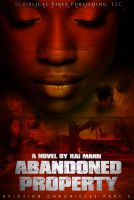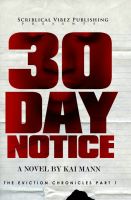
Mystery is not just a genre but an emotion that can be used in
any story. Here are ten tips to help you create mystery in your story:
1. Setting and Tone. Yes, when it comes down to it, the setting and tone of your book is very important, and sometimes amateur writers take them for granted. A true writer will take advantage of the setting to play into whatever emotion they want to give. An affective setting can be scary, delightful, or even mysterious.
For example: A room suffocating with dust and clothed in cobwebs with newspaper clippings cluttering the walls is a mysterious place. It makes you want to know what is on those newspaper clippings and who put them on the walls.
By far, the best way to make your writing mysterious is by writing mysteriously. It's all about your tone!
2. Give your characters a secret. When your protagonist has a secret, your reader will want to know what it is -especially when he/she fears that their secret is going to come out and vows to do anything to prevent that from happening.
3. Give your characters a past. Just as mysterious as a secret worth dying (or killing) for, is a past that keeps haunting your protagonist and/or antagonist. Revealing their past one piece at a time will keep your readers curious, but make sure that you tell them all there is to know by the time you get to the climax.
4. Put a mask on your antagonist. When your protagonist and readers do not know who the culprit is it guarantees mystery.
5. Show your characters point-of-view. I'll say it again because I can't say it enough: Revealing your protagonists' and antagonists' thoughts and feelings is extremely important to not only help your readers connect with them, but to also provide suspense and, of course, mystery.
6. Use emotional responses. How we react to certain things can be very mysterious. Perhaps your protagonist becomes angry when another character says or does something. The reader will want to know why they responded that way.
7. Pose questions. Bringing mystery into your story can be as simple as asking a question and not revealing the answer right away.
8. Reveal clues. This is especially important for murder mysteries. Start by uncovering small clues that seem strange and irrelevant but leads to the bigger picture, whatever that may be.
9. What all of the above boils down to is to be secretive! Even if you're not writing a mystery novel and you
don't have an antagonist, you can still create mystery by being secretive and not telling your reader everything right from the get-go. Instead, draw out the anticipation by revealing the facts one at a time.
10. The most effective method in my opinion is to keep your readers guessing! Throw something at them that makes them believe someone else is the murderer, or provide a plot twist that will cause your readers to doubt what they thought they knew.
1. Setting and Tone. Yes, when it comes down to it, the setting and tone of your book is very important, and sometimes amateur writers take them for granted. A true writer will take advantage of the setting to play into whatever emotion they want to give. An affective setting can be scary, delightful, or even mysterious.
For example: A room suffocating with dust and clothed in cobwebs with newspaper clippings cluttering the walls is a mysterious place. It makes you want to know what is on those newspaper clippings and who put them on the walls.
By far, the best way to make your writing mysterious is by writing mysteriously. It's all about your tone!
2. Give your characters a secret. When your protagonist has a secret, your reader will want to know what it is -especially when he/she fears that their secret is going to come out and vows to do anything to prevent that from happening.
3. Give your characters a past. Just as mysterious as a secret worth dying (or killing) for, is a past that keeps haunting your protagonist and/or antagonist. Revealing their past one piece at a time will keep your readers curious, but make sure that you tell them all there is to know by the time you get to the climax.
4. Put a mask on your antagonist. When your protagonist and readers do not know who the culprit is it guarantees mystery.
5. Show your characters point-of-view. I'll say it again because I can't say it enough: Revealing your protagonists' and antagonists' thoughts and feelings is extremely important to not only help your readers connect with them, but to also provide suspense and, of course, mystery.
6. Use emotional responses. How we react to certain things can be very mysterious. Perhaps your protagonist becomes angry when another character says or does something. The reader will want to know why they responded that way.
7. Pose questions. Bringing mystery into your story can be as simple as asking a question and not revealing the answer right away.
8. Reveal clues. This is especially important for murder mysteries. Start by uncovering small clues that seem strange and irrelevant but leads to the bigger picture, whatever that may be.
9. What all of the above boils down to is to be secretive! Even if you're not writing a mystery novel and you
don't have an antagonist, you can still create mystery by being secretive and not telling your reader everything right from the get-go. Instead, draw out the anticipation by revealing the facts one at a time.
10. The most effective method in my opinion is to keep your readers guessing! Throw something at them that makes them believe someone else is the murderer, or provide a plot twist that will cause your readers to doubt what they thought they knew.
Chrys Fey created Write With Fey, a how-to blog about writing a novel. Every Tuesday there is a new post containing tips, inspiration, insight into her series, and much more. http://www.writewithfey.blogspot.com
















